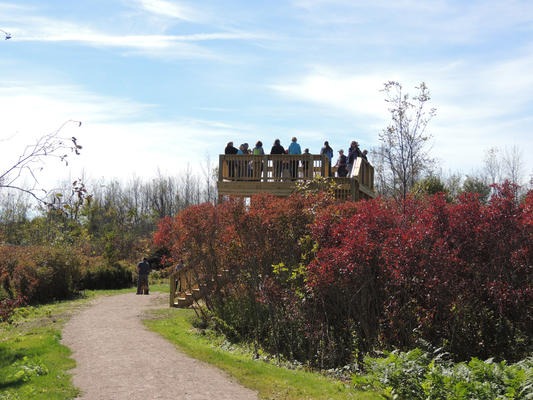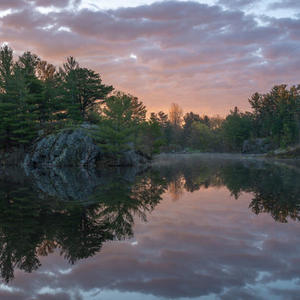TILT’s Partnership for Golden-winged Warblers

In 2013, TILT joined with local conservation organizations including the Indian River Lakes Conservancy and the New York Department of Environmental Conservation to create the St. Lawrence Valley Partnership for Golden-winged Warblers.
This partnership is working to create suitable nesting habitat for the Golden-winged Warbler, a neotropical migratory bird whose population is in great decline due to habitat loss and hybridization with similar species. The St. Lawrence River valley is one of the last strongholds for the population, so this partnership is a regional collaboration to increase these populations in hopes that they will disperse and spread south, creating the lost connection between Great Lakes populations and the populations in the Appalachian Mountains.
Restoration for Golden-winged Warblers and other Shrubland Species
Golden-winged Warblers are shrubland species needing early successional habitat for successful nesting. Through shrubland restoration for this species, we are also enhancing lands for a variety of associated species including American Woodcock, Ruffed Grouse, Eastern Towhee, and a variety of wildlife such as red Fox and White-tailed Deer.
Restoration for Golden-winged Warblers is tricky business. These birds require specific habitat: a layer of grasses is needed for nest construction, shrubs are needed to shelter ground nests that are built at the shrub edge and a single standing trees is needed here and there to provide a perch for males who sing to defend their territories and attract mates. Luckily, the Cornell Lab of Ornithology, Audubon New York and Clarkson University, also partners on this endeavor, have worked to assist conservation organizations with these picky site specifics. Bird experts have provided management plans for sites to be altered slightly to meet the needs of Golden-winged Warblers, and provided surveys at each of the sites to see how many Golden-winged Warblers are currently residing in the area before restoration occurs.
Restoration at Otter Creek

TILT’s Otter Creek Preserve, created from abandoned farmland, had all the criteria for early successional forests. With the help of the Cornell Lab of Ornothology and Audubon New York, site surveys found a Brewster’s male (a hybrid Golden-winged Warbler) that was active on the site. This meant that there was potential to attract pure Golden-winged Warblers.
TILT staff worked to create a mosaic of shrub clumps, leaving some standing single trees for males to perch and sing their territorial calls. Grass was mowed to create an herbaceous layer, which gives the birds nesting material. Golden-winged Warblers make their nests of grasses on, or near, the ground at the base of shrubbery. Stewardship staff will continue to maintain this habitat, preventing the forest from succeeding beyond early succession, ensuring continued suitable habitat for Golden-winged Warblers at this site.
Demonstration Sites
Demonstration sites have been created following specific habitat criteria at TILT’s Otter Creek Preserve, the Indian River Lakes Conservancy’s Grand Lakes Reserve and on the NYS DEC’s Upper and Lower Lakes Wildlife Management Area in Canton, N.Y. Training sessions will be held at these site annually, teaching interested participants the techniques and benefits to managing for this important species.
Please let us know if you are interested in attending a future workshop.
To learn more about Golden-winged Warblers visit the Cornell Lab of Ornithology website.
To learn more about shrubland bird management visit the Audubon Society of New York’s website.

